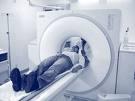
December 15, 2009 - Computed tomography (CT) scan use may make large contributions to the total cancer risk, and risk-reduction efforts may be warranted, according to an article published in the December 2009 issue of The Archives of Internal Medicine.1
According to researchers, the use of CT scans in the United States has increased more than three-fold since 1993 to approximately 70 million scans annually. This fact has prompted concern about the potential radiation-related cancer risk, despite the great medical benefits from this diagnostic tool.
Researchers estimated that approximately 29,000 (95 percent UL) future cancers could be related to CT scans performed in the United States in 2007. The largest contributions were from scans of the abdomen and pelvis (n = 14 000) (95 percent UL), chest (n = 4100) (95 percent UL), and head (n = 4000) (95percent UL), as well as from chest CT angiography (n = 2700) (95 percent UL). One-third of the projected cancers were due to scans performed at the ages of 35 to 54 years compared with 15 percent due to scans performed at ages younger than 18 years, and 66 percent were in females.
The study concluded: "These detailed estimates highlight several areas of CT scan use that make large contributions to the total cancer risk, including several scan types and age groups with a high frequency of use or scans involving relatively high doses, in which risk-reduction efforts may be warranted."3
1. Berrington de González A, Mahesh M, Kim K-P; et al. Projected cancer risks from computed tomographic scans performed in the United States in 2007. Arch Intern Med. 2009;169(22):2071-2077.
2. Ibid.
3.Ibid.


 August 09, 2024
August 09, 2024 








